Here are 5 sure-shot tricks to grow bushier pothos without any pruning at all! Following them is easier and takes no work at all.
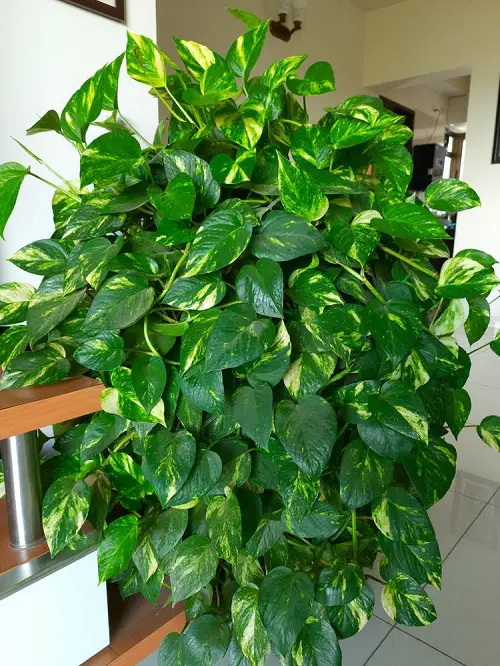
With just a few easy methods, you can make your pothos fuller and healthier, no scissors needed. Try one or two of these tricks to grow bushier pothos without cutting any vines and watch your plant fill out naturally.
Tricks to Grow Bushier Pothos Without Cutting Any Vines
1. Coil the Vines to Trigger New Growth Without Cutting
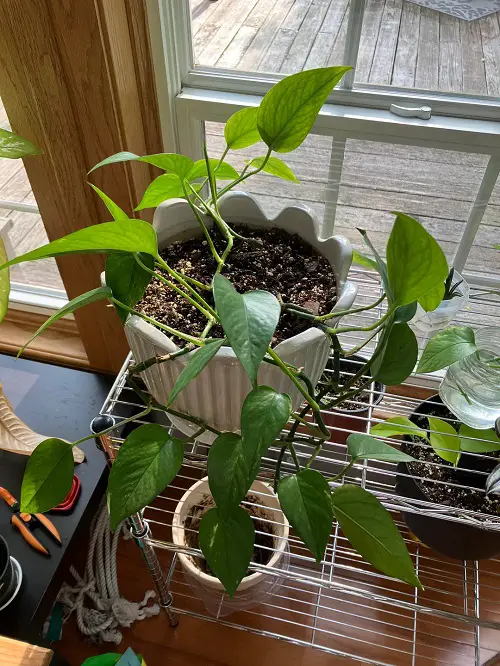
One of the smartest ways to grow your pothos bushier is to lay the longer vines directly on top of the soil. When in contact with moist soil, the nodes will naturally send out roots, and each rooted node will potentially grow a new leafy shoot. New roots usually appear within 2–4 weeks.
In this way, you don’t have to snip anything, just loop or spiral the vines around the base of the plant like a wreath. If you want to make this work faster, press the nodes gently into the soil using hairpins or floral wire. Once the nodes root, they will produce their own stems and leaves, filling in the base like a natural layering effect.
Pro Tip: Lightly scratch the underside of each node with a toothpick before pressing it down–this can speed up root formation.
2. Micro-Feed Your Pothos Like a Pro
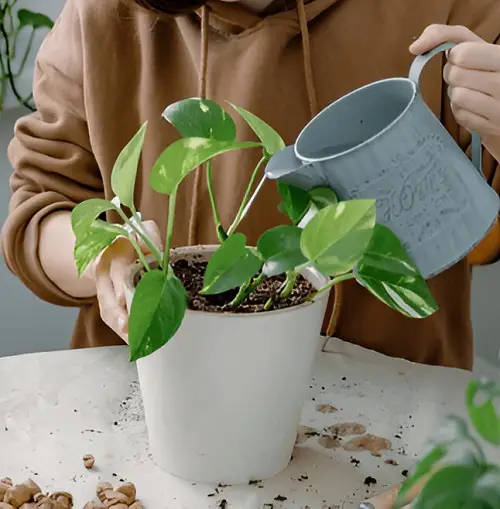
Instead of giving your pothos a strong dose of fertilizer once a month, switch to micro-doses every 10–12 days. All you need to do is use a balanced liquid fertilizer at one-fourth the recommended strength and dilute it further with lukewarm water.
This will create a low-nutrient, steady-flow environment that encourages consistent node activity and new shoot formation rather than long, leggy growth. Your plant will interpret this frequent but gentle feeding as a signal of abundant resources, and instead of racing toward light with sparse leaves, it will start forming more compact and bushy growth.
It is really helpful in low-light homes where growth can otherwise get spindly. You can also add a drop of seaweed extract or fish emulsion once a month to supply natural growth hormones that encourage branching.
Try brands like Schultz Liquid Plant Food or DIY seaweed solutions. Maybe go with these DIY options!
3. Bounce Light to Wake Up Hidden Growth
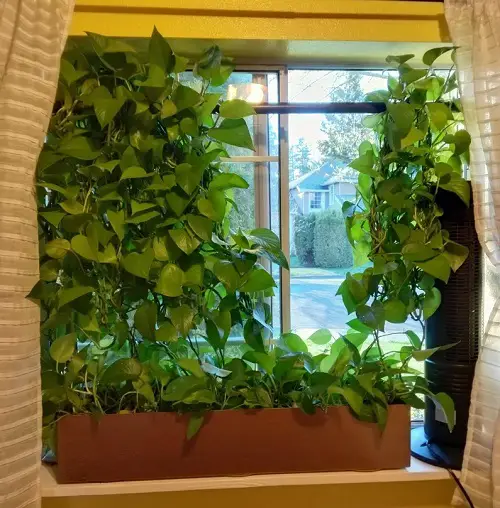
Pothos often gets bushy at the tips and sparse near the base because light reaches only the upper vines. To fix this, you can place reflective surfaces (like a white foam board, mirror, or even aluminum foil) behind and underneath the pot to bounce light onto the lower nodes.
This trick mimics natural light penetration from all sides, further encouraging inner nodes to activate and push out more growth. It will work more perfectly if your plant grows near a window but not in direct sunlight. And rotate the pot every few days to ensure even light distribution on all sides.
Fun Fact: Did you know, there are many great pothos varieties that flourish even in low light?
You can also use a small clamp light with a daylight bulb (5000–6500K) to simulate dappled sunlight in darker corners of the room. Over time, the nodes closer to the soil will start producing new vines, creating a fuller appearance without pruning.
4. Switch to a Shallow, Wide Pot for Instant Volume
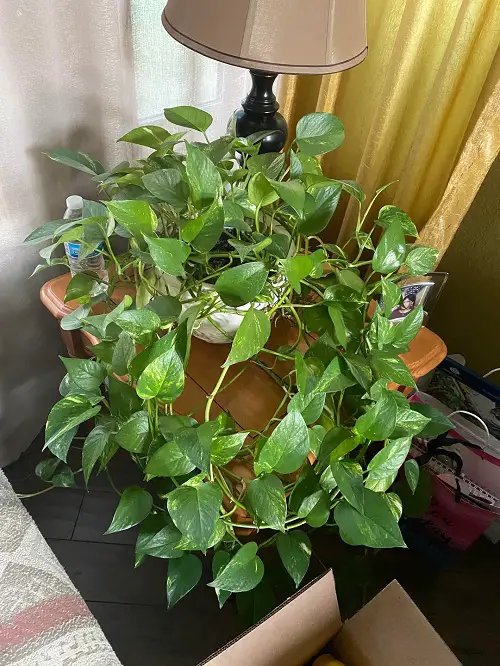
Most pothos plants are grown in deep vertical pots, which promote long trailing growth. If you want to make them bushier, you should switch to a shallow and wider pot with excellent aeration.
Such pots give your plant room to spread laterally and provide good air circulation, which helps to push out growth in multiple directions instead of climbing.
A pot that’s 8–10 inches wide but only 5-6 inches deep can drastically change your plant’s growth pattern.
Pro Tip: Combine this with moss or coco husk mulch to keep the surface humidity stable, which is crucial for supporting aerial root development without overwatering.
5. Mimic Rainforest Humidity for Bushier Growth
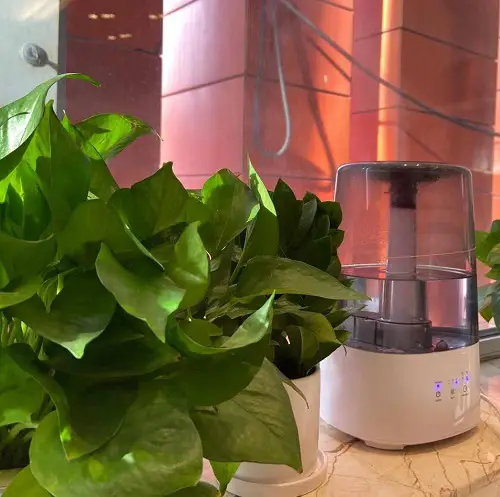
Manipulating humidity might not sound like a direct way to have a bushier pothos, but alternating daytime and nighttime humidity can stimulate more compact and branched growth.
During the day, you should maintain higher humidity (around 60–70%) by using a pebble tray or humidifier. At night, turn off humidifiers or improve airflow to allow the humidity to drop to 40–45%.
The higher daytime humidity will keep leaves plump and encourage aerial root activation, while the drier nights will signal the plant to slow down stretch growth. Plants grown in constantly humid air may look lush, but they often grow leggy.
On the other hand, controlled variation encourages tighter internodes. Also, place the plant near other humidity-loving plants to create a microclimate–grouping improves results without extra gadgets.
Note: Pothos is mildly toxic if ingested by cats, dogs, or children, so make sure it is out of reach.
Growing a lush pothos doesn’t take magic; just the right setup. Start with these small changes and let your plant do the rest.


